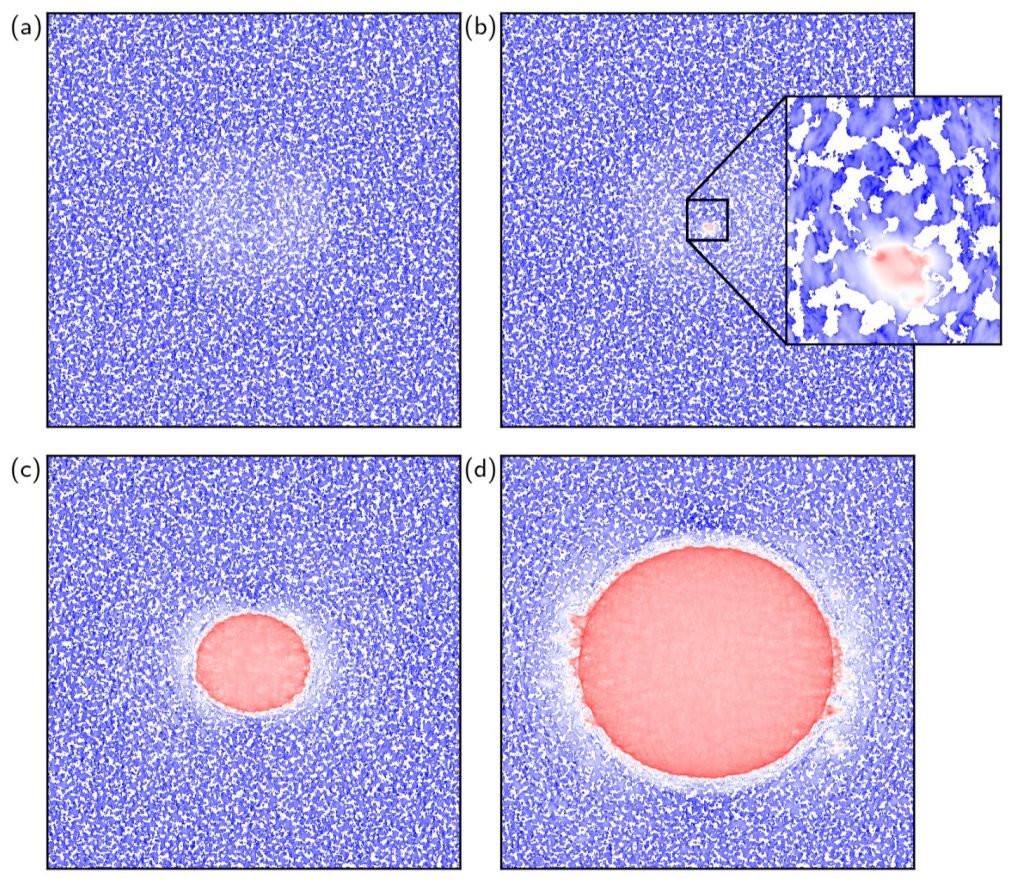Ruptures for fluid-induced earthquakes in geo-reservoirs
Several PhD consecutive PhD theses have been on the topic of rate and state friction, starting with the work of David Kammer (now prof at ETHZ), then Fabian Barras (Univ. Oslo), and finally Thibault Roch (Univ. Amsterdam). All these works contributed to a deep understanding of the processes leading to frictional rupture (Kammer et al., 2015; Svetlizky et al., 2016; Barras et al., 2017; Barras et al., 2019). In particular, through long-term collaboration with Bouchbinder’s group at Weizmann Institute, we discovered that frictional rupture arises from dynamic stress drops intimately linked to far-field loads and the details of the friction law (Barras et al., 2019). In the presence of stress drops, friction can be viewed through the lens of fracture mechanics, with frictional propagation controlled by energy balance (Barras et al., 2020).

Recent breakthrough results have shown that over long time scales, periodic systems with finite size evolve into states of statistical complexity. This is illustrated in the award-winning scientific Figure “Mountains of Friction”, which shows a broad distribution of slip events. A surprising feature is that these systems started with no initial disorder. We demonstrated that the complexity emerges from elasto-frictional instabilities, the dependence of the friction force on slip history, and wave reflections from the system external boundaries (Roch et al., 2024).

Roxane Ferry is currently conducting her doctoral studies to understand how small stress perturbations can trigger earthquakes on critically loaded faults. When these perturbations arise from human activities, they are referred to as fluid-induced earthquakes (FIEs). Accurately predicting the maximum magnitude of FIEs has proven to be challenging, despite its significance in evaluating hazards and ensuring the durability of geo-engineering projects. This research, as an integral part of the INEARTH project, aims to examine the underlying physical mechanisms driving FIEs and the factors that dictate their maximum magnitude. The study employs a combination of Finite Element Method (FEM) and Spectral Boundary Integral Method (SBIM) simulations. The project originality lies in integrating large-scale bi-axial experiments conducted at the LEMR lab with numerical simulations at LSMS. In the initial phase, simulations will facilitate the optimization of sensor placement to enhance the capture of rupture dynamics. Subsequently, simulations will be fine-tuned based on experimental data, thereby enabling the extension of findings through subsequent parametric studies. Results will be upscaled up to geophysical systems, allowing the examination of intricate natural cases, and integrating geophysical data, such as geological formations and in-situ stress measurements. Ultimately, practical guidelines will be formulated to aid in the evaluation of geo-reservoir hazards.
At a macroscopic scale, propagation of slip front along frictional interfaces is studied for several
decades through the lenses of mode-II Linear Elastic Fracture Mechanics (LEFM). This theoretical framework is nowadays well-established to describe the failure of macroscopically homogeneous materials. However, at smaller scale, surfaces are rough and come into contact only through a small fraction of the total surface area, at the highest asperities (see as example cms/lang/en/pid/131883). The shear resistance associated with local surface pressure is then heterogeneously distributed along the slip plane. At the bridge between tribology and fracture mechanics, we study the dynamic rupture of heterogeneous slip plane with the motivation to relate small-scale properties of surfaces to their macroscopic behavior.
The dynamic rupture in presence of heterogeneities is characterized by small time and length scales and requires thereby a very fine numerical discretization along the slip plane. We are simulating rupture event using a spectral formulation of the elasto-dynamic boundary integral equation which provides a level of detail at the slip plane unattainable with more conventional methods (such as the finite element and finite difference schemes).
We are currently studying the distortion observed along a dynamic front meeting a tougher inclusion in the slip plane. We are also aiming at quantifying/predicting the energy radiated as far-field waves during these heterogeneous events.

The roughening of dynamic slip front moving along a disordered plane is another part of our current research topic. Our general target is to bring new insight to the onset of slip between two mesoscopically rough surfaces in contact where the resistance to sliding is heterogeneously distributed.
